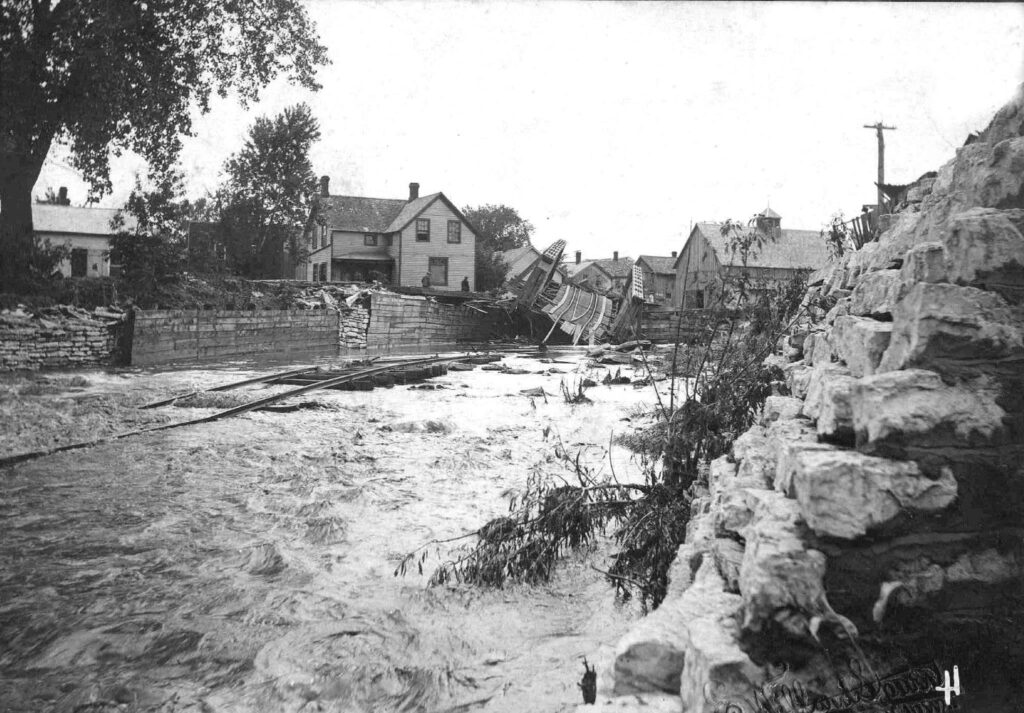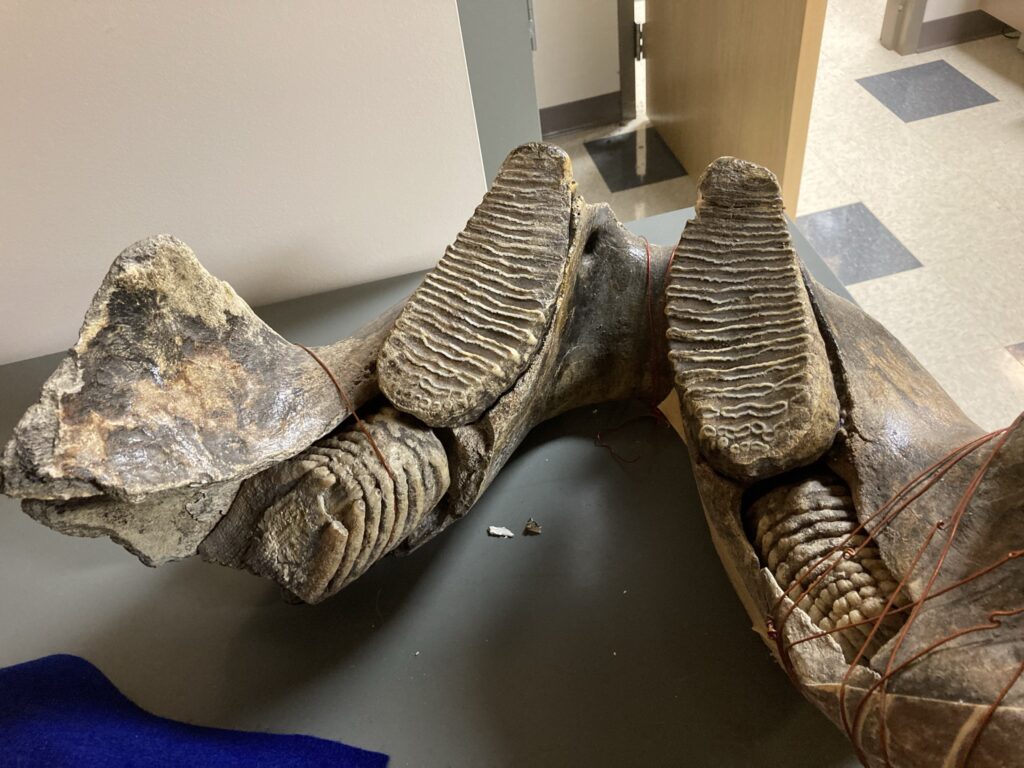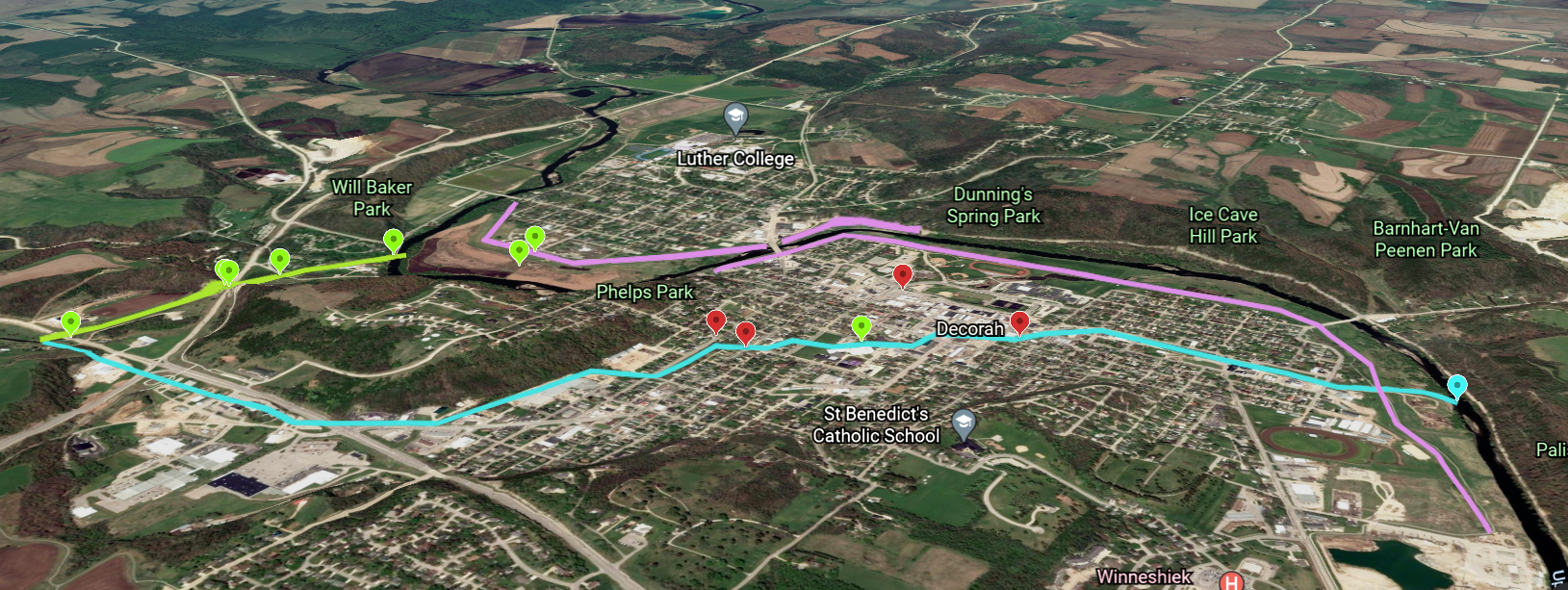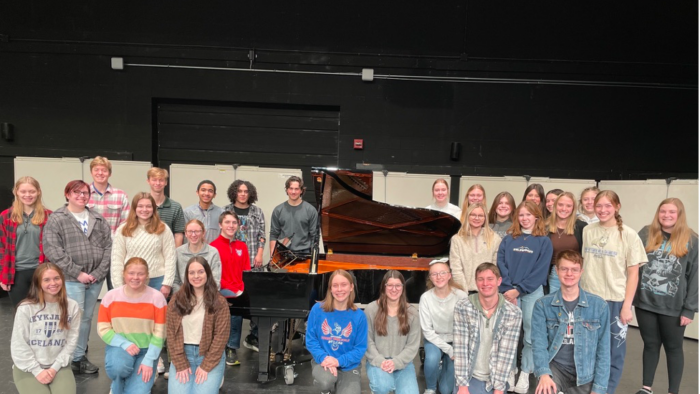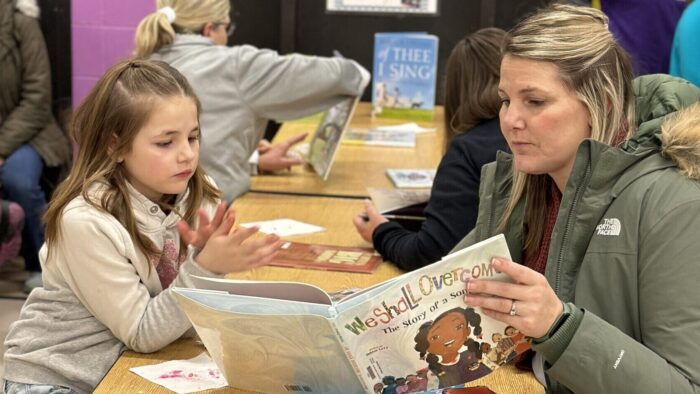DCSD 4th Graders Create Virtual Connections to Real Winneshiek County through Partnership with Winneshiek County Conservation
March 16, 2021
By Lilly Jensen, Education and Outreach Coordinator, Winneshiek County Conservation
When Iowa schools closed last spring due to the COVID-19 pandemic, one year ago, the education staff of Winneshiek County Conservation was thrown for a bit of a loop. Our primary goal is to connect students to the natural world of Winneshiek County and, suddenly, we had to do that…through a computer screen.
So, like everyone else, we pivoted and adjusted and tried new things. Some things worked, some didn’t. And, incredibly, some things worked really well, not just getting us by until we could go back to “normal,” but adding to and enhancing the kinds of education programs we can offer.
We are sharing one detailed example of a success story to highlight the creative power of broad community partnerships, and more importantly, to showcase some of the inspiring ways our local schools and teachers have adapted and excelled over the past year. As educators ourselves, we acknowledge and thank all of our local teachers—and anyone involved in teaching children right now—for their dedication to our community’s youth.
A Dry Run Creek Voyage
The fourth grade Iowa CORE earth science standards are focused on geological concepts like weathering, erosion, rock and fossil layers, and changes to the Earth over time. Geology is a big, complex issue for students, especially when textbooks default to using examples like volcanoes or the Grand Canyon, awesome features that do a good job of illustrating concepts but that don’t have a local connection.
But, we are lucky that the Driftless Region is an amazing place to study geology. Working together with the 4th grade teachers from Carrie Lee Elementary: Denise Cook, Ann Fjelstul, Stacy Knight, Carol Lutkenhaus, and Sara Peterson; instructional coaches Tyler Wedemeier and Zach Fromm; and a number of community partners, we were able to bring geology to life by supplementing the 4th grade curriculum with local lessons using examples from, literally, right outside their classroom door.
For example, when the standard curriculum talks about a fossilized baby rhino found in the Ashfall Fossil Beds of Nebraska, we could localize that by helping students learn about a partially fossilized baby mammoth jaw that was identified by Dr. H. P. Field, a dentist from Decorah, in the 1940s. The jaw was discovered during the digging of bridge pilings just across the border in Allamakee County and is now housed in the Luther College Geology Lab.
When students were learning about types of rocks, we could provide each student with a kit of our three most common rock types (limestone, shale, and sandstone) so they could examine real rocks up close. We hosted a rocks and fossils “Show and Tell,” and though identifying rocks on Zoom is hardly what I would call “fun,” getting to see students excited to share their own favorite rock or fossil definitely is!
When they were practicing their mapping skills by mapping volcanoes in the Ring of Fire, we could extend their practice with an activity on mapping the roads, towns, and rivers of Winneshiek County.
We wrapped up the unit with a few lessons exploring the way that Dry Run Creek has changed over time. Dry Run Creek originally ran through the heart of Decorah, right through the Carrie Lee school campus these students attend. Nowadays, the remnant creek still passes through culverts underneath the football field and then under a walking bridge near the Decorah Middle School entrance. Understanding why and how the creek’s route changed was the central exploration for students.
Students began their learning about Dry Run Creek by listening to a recording made by Rosalynn Eppens, a life-long Decorah resident. She told the story of how, when she was the same age as these students, she and her family experienced the devastating flooding of Dry Run Creek in May of 1941. Rosalyn is a master storyteller. She enraptured the students—and the rest of us—as she described watching from her house window (just a few blocks from the students’ school) as Dry Run Creek slowly rose. She described how her father had to stake the family milk cow on a knoll and hope it survived, and how she and her mother quickly walked up toward Phelps Park to escape as water on the street rose from ankle deep to knee deep in just a few blocks.
The 1941 flood is still considered one of the most severe to have hit the area, and it helped lead, in Rosalyn’s words, to the “million dollar project” that re-routed Dry Run Creek and created “the Cut,” the channelization of Dry Run Creek, and Decorah’s dike system.
After students listened to Rosalyn’s story, we used Google Earth’s Voyager platform to create a virtual tour of it, exploring both where Dry Run Creek used to run and where it runs now. We flew through space to locate ourselves at the site on Mechanic Street where Rosalyn estimated there was four feet of water, to the location where engineers blasted through a bluff face to create the Cut, and to where the remnants of the creek still run through their campus.
Members of the Winneshiek County Historical Society and others helped us find historic photos of the damage caused by Dry Run Creek’s flooding—including washing out of railroads—which led to even more discussions about why railroads once existed in downtown Decorah and why they no longer do.
We were all starstruck when, on the final day of the unit, Rosalyn Zoomed into the 4th grade class to tell more of her story and answer student questions. It was, overall, an incredibly powerful experience.
So, what does this mean for the students’ learning and growth? Well, we aren’t privy to gradebooks, but we know that these lessons and activities supported the standards that students have to meet, so we hope it helped them learn academic content in a way that sticks with them.
But, we’ve also heard from some parents that their kids are noticing the roadside rock layers as they drive home on gravel roads; that their kids are watching for Dry Run Creek as they pass through the Cut; that their kids came home and told them an amazing story about Dry Run Creek flooding a long time ago. In the current virtual and disconnected world we live in, we were thrilled to have helped provide a few grounding connections to our local place.
An additional side benefit of all this collaboration is that we—the various educators involved—consistently learn from the community around us. Numerous community members amazed us with their deep knowledge of local history and their passion for sharing that history. We offer them all our gratitude for sharing so kindly with us and the students: Rosalyn Eppens, Elizabeth Lorentzen, Jon Romelton, Steven McArthur, the staff at Arlin Falck Assisted Living, and the Geology Department at Luther College.
Those who would like to listen to Rosalyn’s story or see the virtual “tour” of Dry Run Creek can visit www.winneshiekwild.com/onlineresources or email Lilly Jensen at education@winneshiekwild.com.
